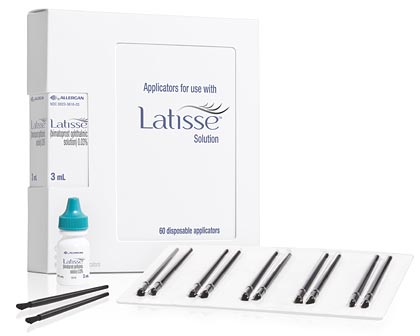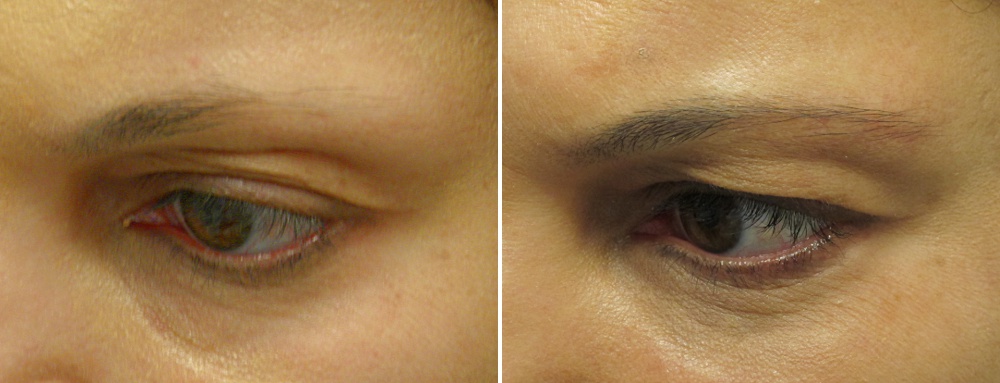
LatisseTM is the first FDA approved (Dec. 2008) topical medication for eyelash growth. It is used to make eyelashes longer, thicker and darker. Applied once a day, it works in over 75% of those using it. Latisse takes about 16 weeks to work. The drug is available only through a doctor’s prescription.
Latisse is applied once a day to the base of the upper eyelashes. The bottom lashes receive the drug from the top lashes through blinking. A 30-day supply costs approximately $120. Once results are seen, it is possible to decrease the application to every other day, decreasing the cost and the inconvenience of applying the medication.
Background
Latisse was first marketed under the name Lumigan to treat eye conditions associated with glaucoma. While being studied for the medical condition glaucoma, researchers noticed the drug had the side effect of stimulating eyelash growth and darkening of the eyelashes. It re-applied for FDA approval for the cosmetic purpose of eyelash growth under the new name. The active ingredient in both Lumigan and Latisse is Bimatoprost. Both products are made by the pharmaceutical company Allergan.
How it Works
Bimatoprost is a compound derived from fatty acids designed to bind to prostaglandin (PG) receptors. PG receptors are present in hair, particularly in the dermal papilla and outer root sheath of the hair follicle. Although the precise way that Bimatoprost works is unclear, it is believed to affect the growth of hair follicles by increasing the percent of hairs in the anagen (growth) phase of the hair cycle and increasing the duration of this phase. It also increases the size of the dermal papilla (hair bulb). These actions have the effect of making hair longer and thicker. The drug will also stimulate pigment cells in the skin and hair follicles (melanogenesis).
Side Effects
The long-term safety of Bimatoprost is based on clinical trials over 13 years. Side effects occur in about 4% of patients using Latisse and include itchy eyes, redness and skin pigmentation. The rare side effect of iris pigmentation that can occur when Bimatoprost has been used in much higher doses for glaucoma has not been reported when it is used to treat eyelashes, but this is still a potential risk.
Eyebrows
Although Latisse has been approved for use on eyelashes, its potential benefit in making eyebrows more full is currently being explored. This off-label use is, of course, an easy added advantage of using the medication, since there is usually enough medication left on the applicator stick to use on the eyebrows as well – for those who desire thicker brows. In our practice, we have found that Latisse is effective in thickening eyebrows, although the results are not quite as dramatic as with eyelashes.
Scalp Hair Loss (Androgenetic Alopecia)
Latisse also has the potential to stimulate the growth of scalp hair. Allergan is currently studying the safety and efficacy of a new formulation of bimatoprost for use specifically as a topical hair loss treatment for common baldness in both men and women.
Additional studies are needed to determine the best vehicle for the active ingredient and to determine if there is any additional risk when the medication is applied to a large surface area. When the results are published, we will post the information. Read our post about the study of bimatoprost for use as a general hair loss treatment.
Latisse Patient Before & After Treatment
Latisse Kit with Applicators







